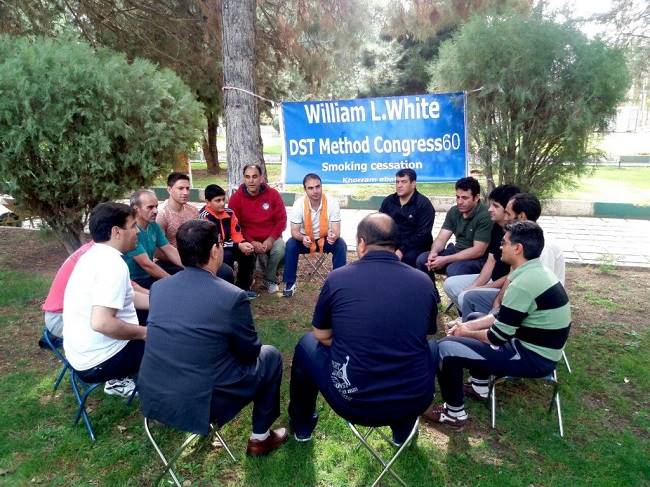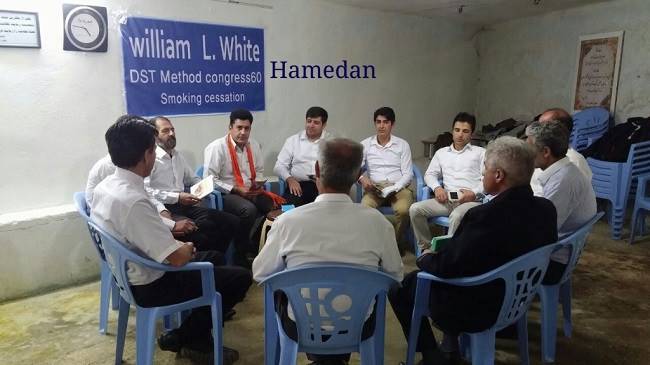 Dimitar Marinov
Dimitar Marinov
Historically, alcohol and tobacco (nicotine) were not considered within the American cultural understanding of "drugs" due to their socially celebrated status and aggressive promotion by the alcohol and tobacco industries. The failure to recognize alcohol and nicotine on par with other psychoactive drugs produced many strange and catastrophic anomalies within addiction treatment and recovery communities. Within early ex-addict-directed therapeutic communities, for example, one could earn "drinking privileges" as part of one's "addiction treatment" and social rehabilitation. Similarly, members of AA, NA, and other recovery mutual aid societies could smoke themselves to disease and death without jeopardizing their "sobriety" or "clean? time status, all the while proclaiming the joys of drug-free living.
Over the past quarter century, the addictions field has been challenged to address the toll of nicotine-related diseases and premature deaths among people recovering from other addictions. I have written extensively about this needed conceptual shift and needed shift in service practices (See Here, Here, and Here for examples). In this brief essay, I share a profile of one of the most successful of such efforts--one drawn not from the United States, but from the Islamic Republic of Iran.
Congress 60 is a recovery community founded by Mr. Hossein Dezhakam in 1998. Since then, it has grown to 58 branches across Iran with more than 53,000 members. Like addiction treatment programs and recovery communities in the U.S., smoking was pervasive within Congress 60. Over the past decade, I have had the privilege of regularly communicating with Mr. Dezhakam and members of Congress 60 about their overall approach to treatment and the evolution of their smoking-related policies and practices.
In the midst of a long series of discussions about the role of smoking cessation in addiction recovery and sharing my sadness at losing many close friends in recovery to smoking-related diseases, Mr. Dezhakam experienced a near-fatal heart attack believed to be caused by decades of smoking. That served as the catalyst to apply the approaches of Congress 60 that had been so successful in achieving recovery from other drug dependencies to aid its members in recovering from nicotine addiction. The resulting approach is one worthy of broad international emulation. Here are the steps taken that are radically changing smoking policies and behaviors within Congress 60.
The theory of addiction (the X theory) that had been applied to the treatment of other addictions in Congress 60 was extended to explain the nature of nicotine addiction.
A unique system of nicotine replacement (the DST method) titrating decreasing dosages of nicotine (gum) over 11 months is used to manage acute and post-acute nicotine withdrawal and reduce nicotine addiction recurrence rates.
As with other addictions, recovery from nicotine addiction is portrayed as a sustained process of physical, mental, emotional, and spiritual (worldview) rejuvenation and self-discovery.
William White Legions (support groups christened to honor the Dezhakam-White communications) meet regularly to provide emotional and social support for smoking cessation.
Smoking cessation is portrayed as a means of completing recovery and enhancing quality of health and life in recovery.
Leaders within Congress 60 were the first to complete and model successful smoking cessation and shared their experiences through this process with the Congress 60 community.
Smoking cessation support is nested within a vibrant recovery community, with its own recovery-focused language, literature, values, symbols, and rituals.
Smoking cessation celebrations are highly visible within Congress 60 and include the involvement of family members and friends.
People aspiring to all levels of leadership within Congress 60 must now first complete smoking cessation to be eligible for these roles.
A formal study of the first 100 individuals who had completed smoking cessation within Congress 60 revealed a high retention rate, low rates of nicotine cravings during and following nicotine replacement therapy (NRT), high one-year nicotine abstinence rates following NRT, and significant self-reported improvements in health and quality of life.
This process of radically reframing smoking within Congress 60 is still in process. In the past two years, 1,838 individuals have successfully completed smoking cessation, 918 from the central branch in Tehran and 920 from branches located within other Iranian cities. The number of total William White legions (smoking cessation support groups) is 138 (56 in Tehran and 82 of in other cities), and there are now more than 800 Congress 60 members participating in these legions. It is expected that these numbers will grow exponentially in the coming years.
Congress 60 exemplifies what can be achieved when a treatment or recovery community setting commits itself to address the nicotine addiction that has long plagued the health and longevity of people in recovery from other drug addictions. My hope is that its methods will be widely replicated and refined internationally.
Below are some visual images of how smoking cessation was integrated within the culture of Congress 60 (e.g., smoking cessation support group meetings). Those wishing more information about Congress 60 may click here to access the Congress 60 website. Congress 60 is making substantial progress in recognizing nicotine addiction as just that and integrating smoking cessation within a broadened understanding ofrecovery. How is your treatment or recovery support organization doing on this life and death issue


